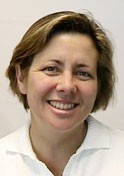- Undergraduate
Bachelor's Degrees
Bachelor of ArtsBachelor of EngineeringDual-Degree ProgramUndergraduate AdmissionsUndergraduate Experience
- Graduate
Graduate Experience
- Research
- Entrepreneurship
- Community
- About
-
Search
All Thayer News
Antarctic Ice Core Contains Unrivaled Detail of Past Climate
Feb 05, 2013 | National Science Foundation
WAIS Divide Core will allow for examination of annual snowfall for each of the past 30,000 years
 Engineering that addresses priority science needs for ice coring and drilling is provided by the National Science Foundation (NSF) through an agreement with the Ice Drilling Program Office (IDPO) led by Dartmouth Professor of Engineering Mary Albert.
Engineering that addresses priority science needs for ice coring and drilling is provided by the National Science Foundation (NSF) through an agreement with the Ice Drilling Program Office (IDPO) led by Dartmouth Professor of Engineering Mary Albert.
A team of U.S. ice-coring scientists and engineers in Antarctica, funded by the National Science Foundation (NSF), have recovered from the ice sheet a record of past climate and greenhouse gases in the atmosphere that extends back 68,000 years.
Retrieved from the West Antarctic Ice Sheet (WAIS), the ice containing the record is known as the WAIS Divide ice core. The cylinders of ice that make up the core contain uniquely detailed information on past environmental conditions such as the atmospheric concentration of greenhouse gases, surface air temperature, wind patterns, the extent of sea ice around Antarctica, and the average temperature of the ocean.
Successfully retrieving the core is the culmination of an eight-year project to obtain a paleoclimate record from one of the remotest parts of the continent.
The ice containing the record was recovered at a field camp in the center of West Antarctica, 1,040 kilometers (650 miles) from the geographic South Pole, where the ice is more than 3,460 meters (two miles) thick. In the new WAIS Divide core each of the past 30,000 years of snowfall can be identified in individual layers of ice. By allowing an examination of past climate at an annual resolution, the record will help scientists understand why climate can change abruptly—in less than 10 years—and how climate could unfold in the coming century.
Link to source:
For contacts and other media information visit our Media Resources page.
